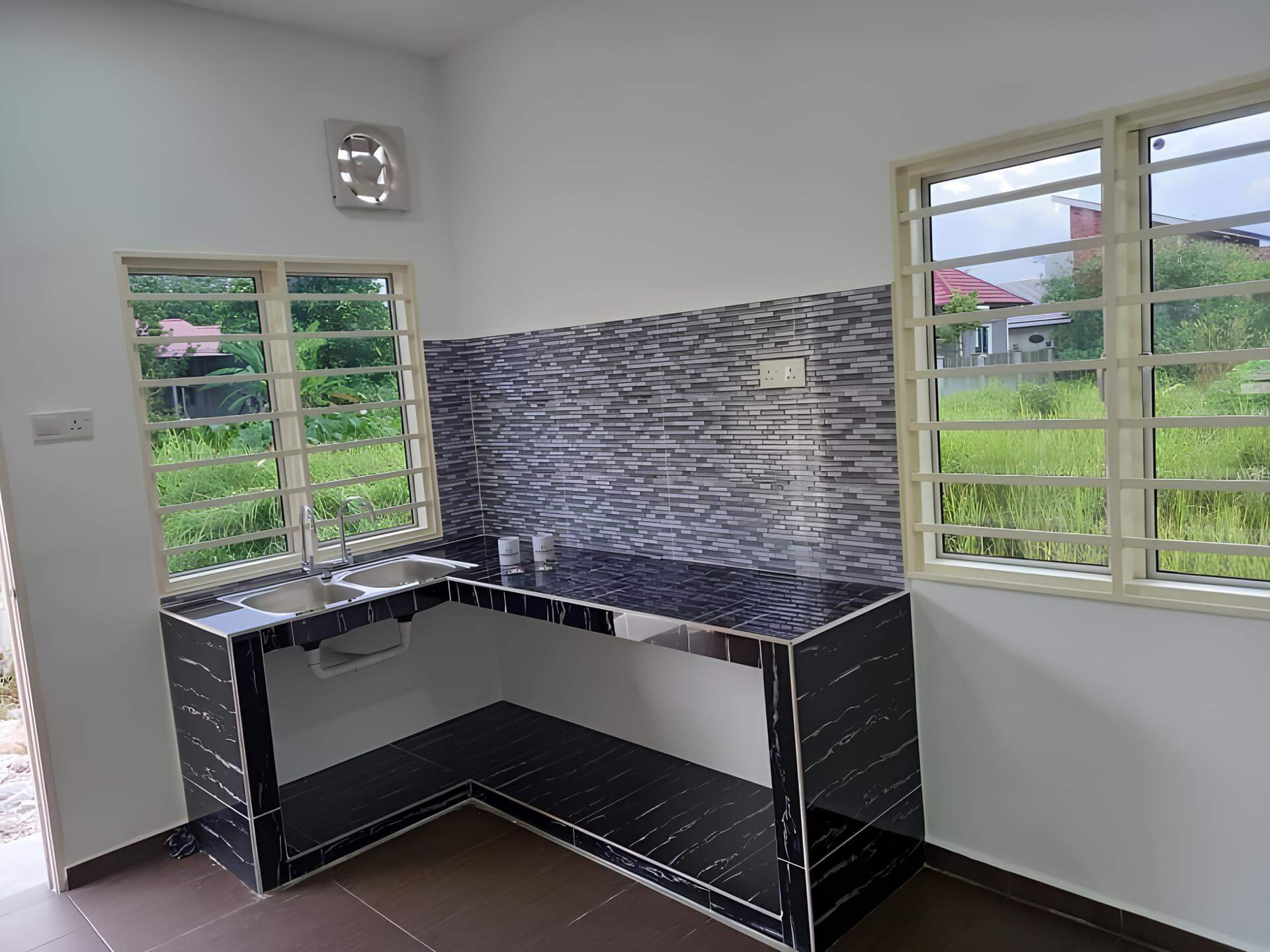In the vibrant landscape of Malaysia’s construction boom, towering skyscrapers and expansive infrastructure projects are popping up like mushrooms after rain. Amidst this impressive growth, one group deserves a standing ovation — the skilled workers. These are the unsung heroes, the diligent hands and creative minds that transform blueprints into breathtaking realities. From resourceful electricians to meticulous carpenters, skilled workers are the backbone of this industry, powering progress and reshaping our cities. So, let’s dive into why these talented individuals are not just vital; they’re absolutely essential to the future of construction in Malaysia. Whether you’re walking through a bustling new neighborhood or gazing at the skyline, there’s a good chance that the magic was made possible by their hard work and expertise.
The Crucial Role of Skilled Workers in Shaping Malaysias Skyscrapers
As Malaysia forges ahead in its ambitious quest to become a leading architectural hub, the vision of breathtaking skyscrapers is only possible through the dedication and expertise of skilled workers. From architects and engineers to construction workers and artisans, each plays a vital role in ensuring that these towering structures not only reach incredible heights but also meet stringent safety and quality standards. These unsung heroes bring dreams to life, transforming blueprints into bustling realities that define our urban landscapes.
One of the key factors that set the latest construction boom apart is the emphasis on specialized skills. The advent of advanced technology has revolutionized construction techniques, necessitating a workforce that is not just labor-ready but also technically adept. This includes:
- Green Building Consultants who focus on sustainable practices.
- Project Managers skilled in juggling timelines and budgets.
- Welders and Fabricators who use cutting-edge materials and methods.
- Technicians who ensure everything runs smoothly, from electrical systems to plumbing.
To further illustrate the impact of skilled labor on skyscraper projects, consider the following table showcasing notable recent developments in Kuala Lumpur:
| Skyscraper | Height (m) | Completion Year | Skilled Workers Involved |
|---|---|---|---|
| Petra Towers | 300 | 2022 | 200+ |
| KL Eco City | 250 | 2021 | 150+ |
| Crown Residence | 280 | 2023 | 300+ |
The collaborative efforts of these talented individuals not only pave the way for iconic structures but also support Malaysia’s economy by nurturing skilled trades. As the country embraces innovative designs and sustainable practices, the demand for skilled workers is set to soar, thus solidifying their status as the backbone of Malaysia’s explosive construction sector.

Understanding the Skills Gap in Malaysias Construction Sector
The construction sector in Malaysia is currently experiencing a remarkable boom, yet it’s running into a significant roadblock: the skills gap. As the industry expands, there’s a rising demand for skilled workers who can utilize modern technologies and methodologies. The irony? Many local workers do not possess the specialized skills needed to thrive in this rapidly evolving landscape. Factors contributing to this gap include outdated training programs, a lack of hands-on experience, and the reluctance of younger generations to pursue vocational careers.
One of the critical issues is that the construction sector has traditionally been viewed as a last resort job. This perception has dissuaded many from considering careers in this field. Vocational training does exist, but it often fails to align with industry demands. Here are some factors amplifying this issue:
- Outdated Curriculum: Many training institutions still teach methods that are no longer relevant.
- Insufficient Hands-on Training: Practical experience is often limited, leading to inexperienced workers.
- Low Appeal of Construction Careers: Young workers are drawn to tech and corporate industries.
Addressing the skills gap requires a collaborative effort among various stakeholders. The government, educational institutions, and industry players must come together to revamp training programs and make adjustments that cater to current and future market needs. This collaboration can foster a new generation of talented, skilled workers ready to meet the industry’s demands. Investing in skills development isn’t just good for workers; it’s crucial for the continued growth and sustainability of Malaysia’s booming construction sector.

Training and Development: Building Competence in Construction Workers
In the ever-evolving landscape of Malaysia’s construction industry, upskilling and professional development play pivotal roles in ensuring that workers are equipped with the latest techniques and safety practices. Investing in tailored training programs not only enhances individual skill sets but also boosts team efficiency and overall project quality. With the rapid advancements in technology and building materials, continuous education has become essential for workers to stay relevant and competitive in the field.
To achieve significant progress, construction companies are increasingly adopting various training strategies, including:
- On-the-job training: Practical experience is invaluable for workers to refine their craft.
- Workshops and seminars: Regular sessions can introduce new methodologies and innovations.
- Skill certification programs: Formal qualifications can enhance credibility and job prospects.
As we delve deeper into the implications of investing in our workers, it’s crucial to recognize how collaborative learning fosters a vibrant work culture. Teams that engage in peer-to-peer sharing and mentorship can accelerate their growth, leading to improved project outcomes. Below is a quick look at some key training benefits for construction workers:
| Benefit | Description |
|---|---|
| Increased Safety | Regular training reduces workplace accidents and injuries. |
| Higher Productivity | Skilled workers perform tasks more efficiently, saving time and resources. |
| Job Satisfaction | Opportunities for growth lead to a more motivated and fulfilled workforce. |


Impact of Skilled Labor on Project Efficiency and Safety Standards
Skilled labor plays a crucial role in boosting project efficiency in the construction sector. With their training and practical experience, these workers can execute tasks with precision and speed, minimizing delays. When a project is staffed with highly skilled professionals, the site tends to run smoother, leading to:
- Less Rework: Errors are decreased, reducing the need for costly corrections.
- Faster Completion Times: Trained workers can push through their tasks more swiftly.
- Optimal Resource Use: Knowledgeable workers can better manage materials and tools, minimizing waste.
Moreover, the presence of skilled labor significantly enhances safety standards on construction sites. These workers are often well-versed in safety protocols and regulations, which translates to a more secure working environment. Their experience promotes a culture of safety by:
- Implementing Best Practices: Experienced hands ensure that safe work methods are honored.
- Prompt Identification of Hazards: Skilled workers can identify and rectify unsafe conditions before they lead to accidents.
- Training Others: They can share their safety knowledge with less experienced team members, fostering a safer culture.
To illustrate the impact of skilled labor, a comparison of project timelines and accident rates can be enlightening. The following table summarizes two project scenarios—one with skilled workers and one with less experienced teams:
| Project Type | Average Completion Time (months) | Accidents Reported |
|---|---|---|
| Skilled Labor | 10 | 2 |
| Less Experienced Labor | 14 | 6 |
It’s clear from this data that employing skilled workers not only expedites the process but also drastically reduces the risk of accidents. Having a dedicated and experienced workforce is indeed a key contributor to the booming construction environment in Malaysia.


Harnessing Technology: Upskilling for Modern Construction Challenges
The rapid evolution of technology in the construction sector has opened up new avenues for enhancing skills among workers. It’s no longer just about knowing how to use a hammer and nails; today’s workers need to be proficient in various digital tools and machinery. Embracing innovations like Building Information Modeling (BIM), drones for site surveying, and even Virtual Reality (VR) for training can significantly transform how construction projects are managed. This shift towards a tech-centric approach not only boosts efficiency but also ensures that the workforce stays competitive.
To effectively adapt to these modern challenges, training programs need to cover a wide array of topics. Some essential skills include:
- Project Management Software: Familiarity with tools that streamline workflow and budgeting.
- Safety Protocols: Utilizing technology to ensure a safer working environment.
- Collaboration Platforms: Leveraging digital communication tools for efficient teamwork.
- Data Analysis Skills: Making sense of data to make informed decisions.
Moreover, investing in formal and informal training initiatives is vital. Many companies are already partnering with educational institutions to develop tailored programs. Here’s a snapshot of various training initiatives:
| Initiative | Description | Target Audience |
|---|---|---|
| Online Courses | Self-paced learning on construction management tools. | New hires and experienced workers. |
| Workshops | Hands-on sessions with the latest machinery. | Field workers and supervisors. |
| Internship Programs | Real-world experience under mentorship. | Students and recent graduates. |


Encouraging Local Talent: Strategies for Workforce Retention
In the vibrant landscape of Malaysia’s construction boom, it’s vital to create an environment that nurtures local talent. This can begin with a solid focus on on-the-job training and mentorship programs. By pairing experienced workers with novices, companies can facilitate knowledge transfer and skill development, ensuring that local labor pools are equipped with the latest techniques and technological advancements. Additionally, providing access to certification courses and skill enhancement workshops can significantly boost worker confidence and competence, making them more integral to ongoing projects.
Another effective strategy for retaining skilled workers is to establish a culture of recognition and reward. Organizations can implement a platform for appreciating individual contributions, fostering a sense of belonging and motivation among employees. This can take various forms, such as employee-of-the-month awards, team-building activities, or even simple shout-outs on company platforms. When workers feel valued for their efforts, they are more likely to stay committed to their roles, leading to a more stable workforce.
Furthermore, creating a supportive workplace environment can significantly enhance workforce retention. This could involve offering flexible working arrangements, promoting work-life balance, and establishing channels for open communication. By implementing mental health initiatives and well-being programs, companies can ensure that their employees feel supported, both personally and professionally. Providing such resources not only helps in retaining skilled workers but also cultivates a positive company culture that attracts new talent.


The construction sector in Malaysia is standing tall, not just due to its architectural feats but because of the multicultural workforce that fuels its growth. Every project site buzzes with voices and talents from different backgrounds, reflecting the nation’s rich diversity. Embracing these varied skills means harnessing unique perspectives that lead to innovative solutions and a more dynamic work environment. The blending of traditional techniques with modern practices drives efficiency and creativity, making every structure a testament to collaboration.
Promoting diversity isn’t merely about ticking boxes; it’s about recognizing the value of different experiences. When workers from various cultures converge, they bring with them distinct problem-solving strategies, communication styles, and work ethics. This synergy fosters an environment where learning is continuous, enabling teams to adapt swiftly to challenges. The benefits ripple outwards—from increased productivity to enhanced job satisfaction, creating a harmonious workplace where everyone feels valued.
| Aspect | Benefits of Diverse Skills |
|---|---|
| Innovation | Fresh ideas lead to creative design solutions. |
| Efficiency | Improvement in productivity and problem-solving. |
| Community Building | Fosters inclusivity and collaboration among workers. |
| Skill Development | Opportunities for cross-training and mentorship. |
Nurturing an inclusive workforce contributes to the overall growth of the industry. From legal frameworks promoting equal opportunities to initiatives that actively support underrepresented groups, it’s clear that the call for diversity is resonating through the construction landscape. As Malaysia continues to rise as a leader in development, embracing the collective strengths of its multicultural workforce will ensure sustainable progress that honors the spirit of unity in diversity.


The Path Forward: Policies for Boosting Skilled Labor in Construction
To elevate the construction sector, it’s vital to introduce comprehensive training and development programs aimed at enhancing the skill sets of our workforce. Collaborative efforts between government entities, educational institutions, and industry stakeholders can create tailor-made curriculums that cater to the specific needs of the construction industry. By providing accessible training opportunities, we can ensure that workers are not only job-ready but equipped with the latest techniques and technology in construction.
Moreover, implementing incentives for companies that prioritize hiring and training skilled labor can significantly stimulate growth in this sector. These incentives could take the form of tax breaks, grants for training programs, or subsidies that cover the costs of apprenticeships. This approach would not only encourage businesses to invest in the future workforce but also help to build a more competent construction community that can adapt to the evolving demands of the market.
Lastly, creating a robust network of mentorship opportunities is essential. Experienced workers can guide newcomers, impart knowledge, and elevate the overall skill level within the industry. This kind of support system fosters a culture of continuous learning, where workers are empowered to share their expertise and innovative ideas. Along with mentoring programs, establishing a recognition system for skilled labor will motivate individuals to pursue excellence in their craft, ultimately leading to higher standards in construction projects.
The Conclusion
So there you have it! Skilled workers truly are the unsung heroes behind Malaysia’s construction boom. Their expertise isn’t just about hammering nails and pouring concrete; it’s about building dreams, crafting homes, and creating the vibrant infrastructure that keeps our nation moving forward. As we continue to see our skyline grow and our communities develop, let’s take a moment to appreciate the hands that shape our future. Investing in these skilled workers is an investment in Malaysia itself. So, whether you’re in the industry or just a proud Malaysian watching our country flourish, remember that every structure tells a story, and those stories are possible because of the dedication and talent of our skilled workforce. Here’s to a strong future together! 🏗️✨

Source link
kontraktor rumah
bina rumah
pinjaman lppsa
pengeluaran kwsp
spesifikasi rumah
rumah batu-bata
pelan rumah
rekabentuk rumah
bina rumah atas tanah sendiri
kontraktor rumah selangor
rumah banglo




